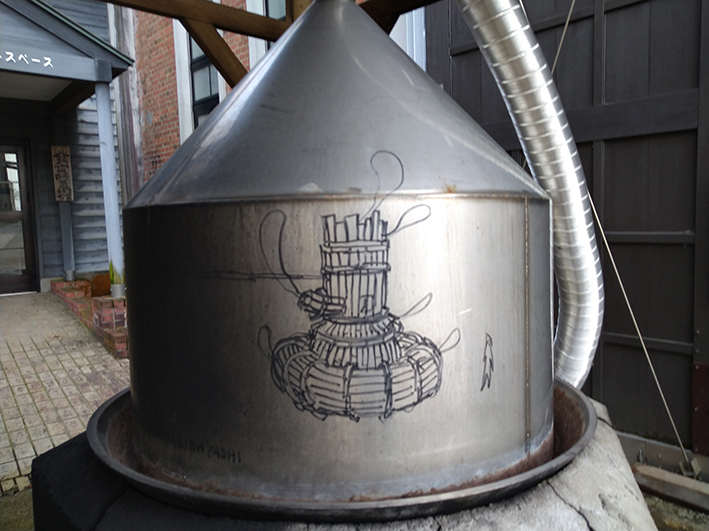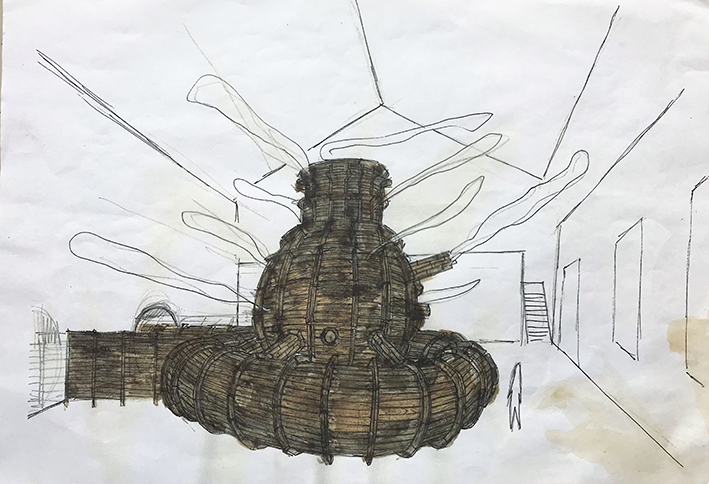Exhibition Review: Takashi Kuribayashi Solo Exhibition at Nizayama Art Park Power Plant Museum at Nyuzen Town, Toyama Prefecture
Exhibition Review of Takashi Kuribayashi Held at Power Plant Museum thru Nov 21,2020 to Mar.21, 2021
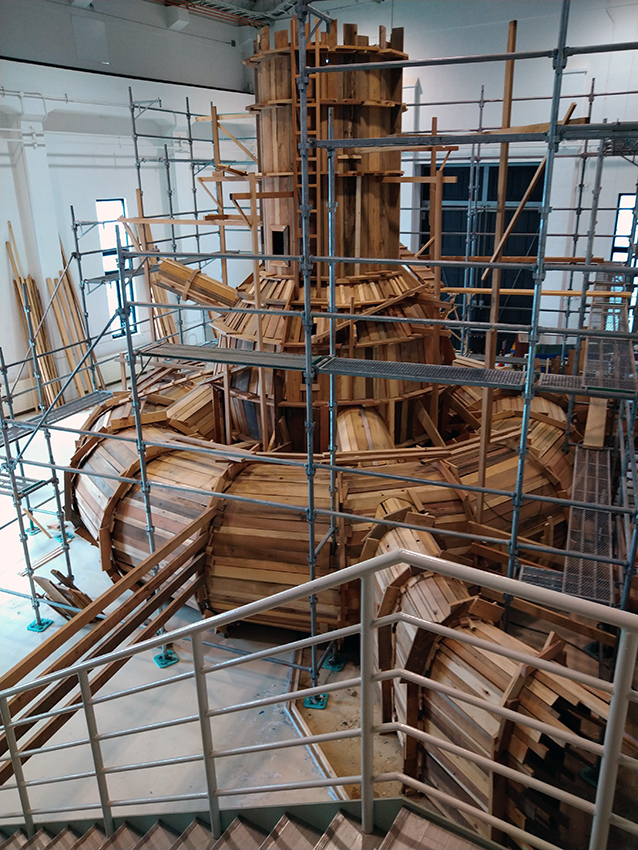
exhibition date:Nov. 21, 2020 to Mar. 21, 2021
Nizayama Art Park Power Plant Museum is the "former Kurobegawa No. 2 Power Station", a brick hydroelectric power plant originally built in 1926. The town took over the building from Hokuriku Electric Power Co., Inc. and opened it as an art museum in April 1995. It is an interesting facility that one should visit once as the building itself was designated as a “national registered cultural property" in 1996. Despite the limited public budget run by a small town in the countryside, they regularly hold solo exhibitions of high-level artists. There only is one curator, working alone, from planning, inviting, and assisting production.
The internet website of the museum is only one page in the town website address (no English), and does not give us much of information, but if you search on internet (in Japanese), we are able to find many visitors writing about the exhibitions there. We made an initial plan to visit there in January, slightly worrying the museum hours under this COVIT 19 situation. But hearing the news about the record breaking heavy snowfall hitting Toyama City in January, we decided to wait for the snow to melt away.

The work exhibited at the Takashi Kuribayashi exhibition is a large installation called "GENKI-RO" (meaning Energy Plant, rhyming with GENSHI-RO, meaning Nuclear Reactor). Takashi Kuribayashi has been regularly visiting Fukushima for research since the Great East Japan Earthquake. This year after 10 years since nuclear accident, he decided to create a work imitating the shape of a nuclear reactor at the opportunity of showing at Power Plant Museum which has a relation with energy. Checking the internet about the shape of the reactor, the power plant in Fukushima, built in the 1960s had second-generation reactor, resembling the shape of Kuribayashi’s work.

Looking back the exhibition held at Aoyama Spiral in 2015, Kuribayashi's "Vortex 2015: A Letter from Einstein"’ had a chandelier with the same shape. It was a chandelier shining in a dark room with its walls made of black flexible container bag, the same bag as the ones used in Fukushima to fill contaminated earth after the nuclear accident. The chandelier was made of glass alphabets taken from the letter sent by Einstein to President Roosevelt asking for permission to develop atomic bomb, and the words reflected shadow on the surrounding container bag walls. The impression of what you think is beautiful at first glance changes dramatically the moment you discover the meaning. It was an excellent work that showing the relationship between the two sides of the same coin, what you knew and what you don’t, what you see and what is hidden.

The artist says, "What if all the people who entered the reactor came out in good spirits?" According to the artist, the work at the Power Station Museum is an attempt to positively express the negative nuclear power problem. Hot water is boiled with herbs in a stove outside the museum and send the steam into the work through a pipe. Visitors are invited to go inside the work, and when the temperature inside exceeds a certain average (meltdown), the audience immerses themselves in the cooling water stored under the floor as if they themselves were control rods. Unfortunately, the day we visited the stove was not turned on, but with the similar system like sauna, the person at the museum explained us that there are many audience who actually come out from the work feeling themselves being refreshed. According to the museum staff member, steam makes the inside all white, without being able to see a meter ahead. That experience must be also be impressive one, but still even without the steam, the scale of the work was a very powerful enough.

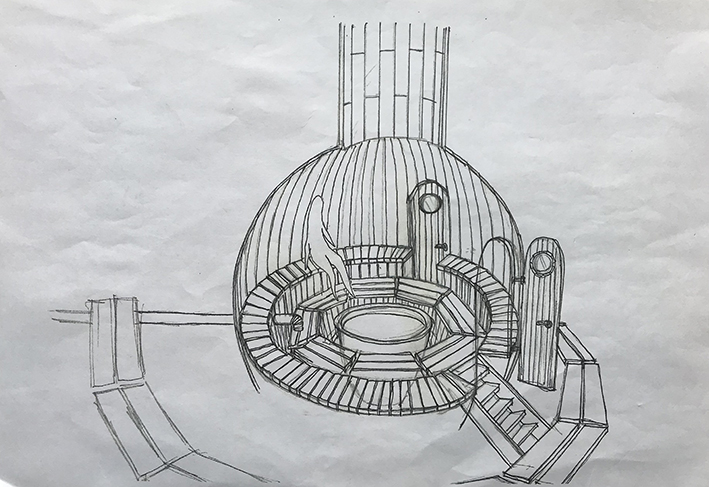
This kind of work using fire is almost impossible to be exhibited in most of museums, but result of Kuribayashi’s artistic power to realize something which is almost impossible and ridiculous, if it isn’t art. It may initially seems to have nothing to do with the esoteric nature frequently found in contemporary art, but it still has a sharp edge in common with Kuribayashi’s previous work in Spiral, clearly showing humorous impression on the outlook side while giving a glimpse of the cynical edge fully hidden in the pockets.
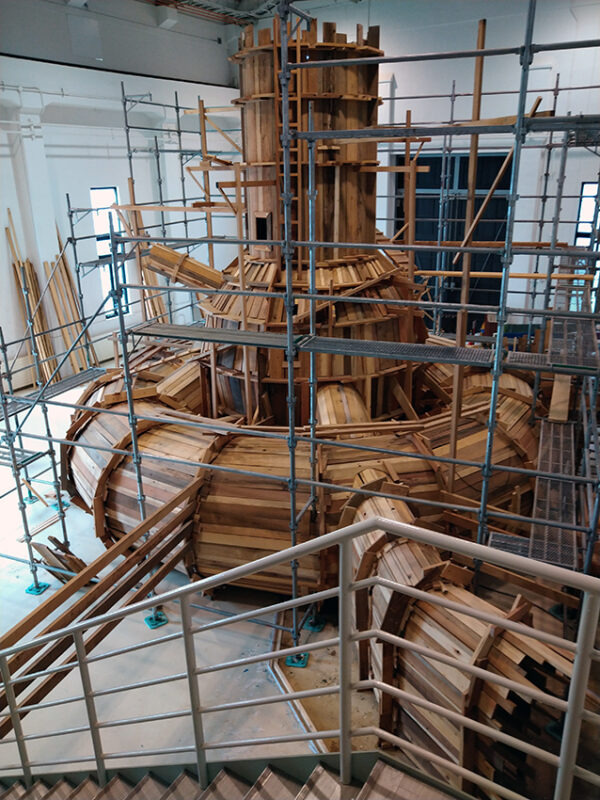
Due to the strong humorous aspect, the sharp impression found at Spiral exhibition may be less here, but instead, it was a somehow gave us a different aspect. It was a very positive “device” that make audience experience using the full body, giving an impression receiving an energy. Recalling the work, I am still surprised again finding broadness of the different patterns in art, and happy to know that art still is possible to head for such a positive direction.
